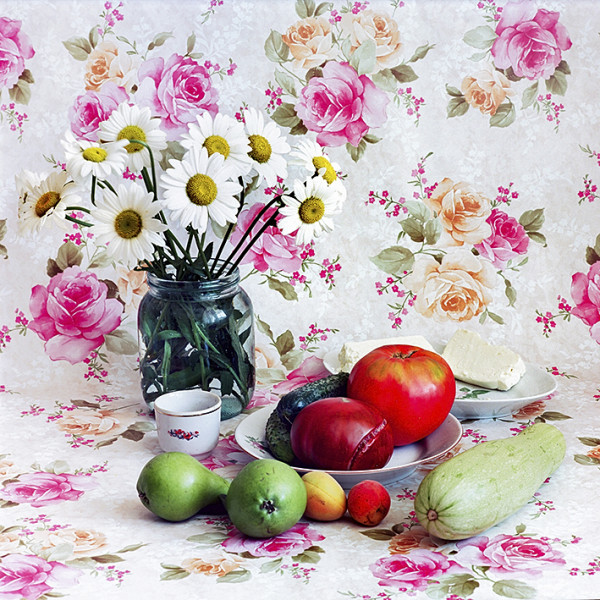Eugenia Maximova
Saturday, 28 December 2013
Work from Associated Nostalgia
“Kitsch and the human propensity for exaggerating have always fascinated me,” says Eugenia Maximova, who was born behind the Iron curtain, in the Bulgarian city of ruse on the banks of the river Danube. “Many of my childhood memories relate to kitsch. It was on open display in almost every household growing up – crystal and ceramic dinner sets, vases and figurines, hard-to-acquire foreign objects, plastic fruit and flowers. They were showcased behind glass and were the pride of the house.”
But it was only when she started working on the design for Kitchen Stories From the Balkans – her self- published photobook, available this month, based on her much- published series of modest interiors – that she began to think about how to include “some of those incredible plastic tablecloth patterns so beloved in these latitudes”. Then came the discovery that the garish tablecloths have been manufactured in her hometown for many years; all the serendipity she needed to forge a new project, Associated Nostalgia.
From plastic cats to brightly patterned wallpaper, nothing is too garish or clashes too much to be included in her still lifes.
“Kitsch is sometimes difficult to digest, but for many it is also unpretentious and tasteful,” states the journalism graduate, who picked up a camera eight years ago after the sudden death of her mother, a noted painter, and who regards her work as something of an antidote to the usual stories about the region, focusing on conflict. “Kitsch doesn’t require lots of preparation, rethinking or consideration. In fact, it barely requires any thinking at all. Kitsch is melodramatic, sentimental and folksy, but it also entertains. The kitsch culture of today flourishes across all areas of life.” But, she insists, the work remains a form of social observation and commentary.
“The scarcity of goods during communism created a culture of showing off, in which people behave ostentatiously. Kitsch was also widely used as political propaganda during that period. Art’s sole raison d’etre was to bolster a dictatorial regime and glorify its leaders.”
She chooses subjects to photograph from her memory, sourcing objects from “forgotten drawers”, and photographs them using a Hasselblad 500cM in natural light. “I like still life as a genre because it leaves enough space for personal creativity,” says Maximova. “It is up to the artist’s imagination what you see.”
text via BJP


